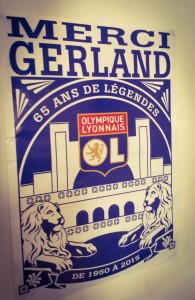The Stade de Gerland will be used by one of the participating nations at Euro 2016 as a training venue but in all probability, it saw the last ever competitive football played on its turf towards the end of 2015. On 9th January 2016, Olympique Lyonnais moved to take up residence at the new Parc Olympique Lyonnais and they celebrated the move with a 4-1 league win over struggling Troyes. Located in the eastern part of the city it is a 59,000 capacity stadium that has also been chosen as a host venue for the 2016 UEFA European Championships.
After Paris and the southerly Marseille, Lyon is the third largest centre in France and, with its diverse population and expansive transport network, it is at the centre of the second largest metropolitan area in the country. It is the capital of the Rhone-Alpes region and the main city of the Rhône département. The region was named after the Rhône and the Alps mountain range which sit nearby.
With its narrow streets, Roman remains and cobbled alleyways Lyon offers an unusual journey through time and various cultures. Lyon is chiefly known as a gastronomic and historical place with traditional restaurants (bouchons) dotted around and a vibrant nightlife on offer.
It is also the birthplace of filmmaking and cinema with the Lumière brothers born in Lyon.
Today Lyon is a modern sprawling centre with traces of its long historical past everywhere. A large bi-millennium destination Lyon is a World Heritage site as listed by UNESCO and backs onto the hills of Fourvière and Croix-Rousse at the confluence of the Rhone and the Saone rivers. It has a sizeable old city (Vieux Lyon) and very few large cities in France outside of Paris boast such diversity in urban structure, architecture and natural attractions.

For football fans of OL, the city’s greatest landmark remains the Stade De Gerland a venue for the FIFA World Cup held in France during 1998. Like the Stade Chaban-Delmas in Bordeaux, it is a classical municipal stadium with well-preserved concrete arches and unique features exterior to the playing surface.
The stadium was the work of urban planner Tony Garnier and a commemorative plaque outside the main entry gate make reference to his role in its creation. In its early days, it was a multifunctional venue hosting cycling, athletics and rugby. It was also used for public rallies and so-called ceremonies populaire where congregations of locals would gather for leisure activities.
Its grand entrance remains flanked by two large lions.
It was not until the formation of Olympique Lyonnais in 1950, from the skeleton of another local football side, that the stadium becomes known primarily as a football venue. Before the 1984 UEFA European Championships, the stadium took on some of the shapes and feel we know it for today when the athletics track was removed and stands behind the goal moved closer to the pitch.
Before FIFA World Cup France 1998 further reconstruction occurred and the capacity grew to 44,000. However, to this day a brisk walk around the exterior of the Stade Gerland shows that much of the original architectural concept remains in place even if most decoration is a little on the ageing side these days.
Parc Olympique Lyonnais
The new modern stadium is located in the Décines area of Lyon to the east of the city centre heading towards Lyon Saint-Exupéry Airport. The ground is located near the Grand Large reservoir with the centre of the city about 10km west.
Funded through public money and a range of private backers the Parc Olympique Lyonnais concept was originally visioned as being OL Land – namely a huge branded sporting and business complex dedicated solely to the sporting institutions of the club. In 2009, before any construction phase had taken place, the stadium was selected by the FFF as one of the main venues for UEFA Euro 2016.
Construction of the stadium started in summer 2013 and was eventually completed towards the end of 2015.
The contrast with the lasting but crumbling traditions of the Stade De Gerland could not be more telling. The Parc is advertised as offering visitors “comfort, visibility and security” while promising to “exceed the expectations of the audience by offering optimal performance conditions to performers and perfect viewing opportunities for visitors”.
Technologically enabled with wifi and large plasma screens it is a venue with a number of local and multi-national corporate partners. In appearance, its design differs little from most modern grounds but it is ideally located for most fans whether they arrive by train or via car. There is good accessibility from most major roads near Lyon with the stadium being at a key strategic location at the heart of Lyon’s public transport network.
In 2015 Olympique Lyonnais celebrated 65 years at the Stade Gerland with a number of commemorative events. Meanwhile the most hardcore of home fans – the Bad Gones – said goodbye to the ground with a huge choreography. Host venue to the most successful period in OL’s history one very sad backdrop came during the 2003 FIFA Confederations Cup semi-final between Cameroon and Colombia. Cameroon international midfielder Marc-Vivien Foé collapsed suddenly on the pitch and died shortly afterwards in a Lyon hospital.
The photo album from Lyon can be viewed here.
